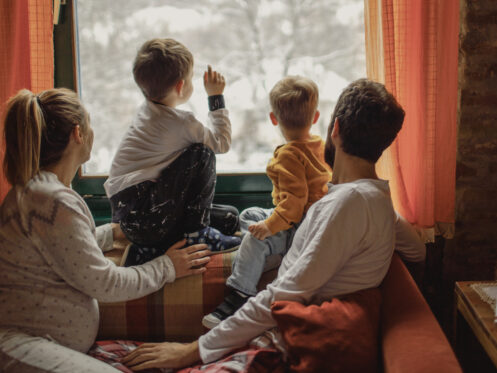The first hard freeze can show up overnight, and if your plumbing isn’t ready, water stops flowing fast. It only takes one cold snap for unprotected pipes to crack or burst. That’s when slow leaks, water damage, and costly repairs start piling up. You don’t need fancy tools or a complete overhaul — just a clear plan and attention to the right spots. When winter hits, it pays to know what can go wrong and how to avoid it. If you’re not sure where to begin, the licensed pros at Bryant Heating, Cooling, Plumbing & Electric in Cincinnati, OH can help you get ahead of the season. Instead of hoping for a mild winter, you can prep your plumbing like it matters.
What Freezing Water Does to Your Pipes
When water inside a pipe begins to freeze, it doesn’t sit quietly. It expands. That expansion creates pressure, especially between the ice blockage and a closed faucet or valve. The pipe doesn’t need to be completely frozen to break. It only needs one short frozen section to trap the pressure. As the water freezes, the pressure keeps building behind the blockage. Eventually, the pipe can’t hold it anymore. That’s when it bursts. Even strong materials like copper or PEX can split if the pressure builds in the wrong spot.
A single split could mean hundreds of gallons of water pouring into your walls, basement, or crawlspace. That’s why prevention matters more than quick fixes. Once the water freezes, the clock starts ticking. The longer it stays frozen, the more stress it puts on the rest of your system.
The Most Vulnerable Spots Inside and Outside
Not every pipe has the same risk. Pipes that run through unheated areas get hit first. That includes exterior walls, garages, attics, basements, and any crawlspaces. Outdoor spigots and hose bibs freeze fast because they’re exposed on all sides. Even indoor pipes can freeze if they’re tucked too close to an uninsulated wall. The layout of your home makes a big difference.
If you have long pipe runs that pass through cold spaces before reaching the kitchen or laundry, those stretches need extra attention. A finished basement helps, but even then, cold air can get in through vents, cracks, or poorly sealed access doors. Once temperatures drop below freezing at night, any pipe in an unheated zone becomes a risk. And if a single elbow or joint freezes, the rest of the system can quickly back up behind it.
Why Small Leaks Get Bigger in Winter
A pipe that already has a minor crack or weak joint may hold steady in summer. Once freezing temperatures hit, that same weak point becomes a failure waiting to happen. Moisture inside the crack freezes first, widening the gap. As pressure builds behind it, water pushes its way out, sometimes without a clear spray or puddle. The leak might not show up until you notice mold or warped drywall.
Cold weather also stiffens older pipe materials, especially in aging homes. That stiffness makes them less flexible, so when water inside tries to expand, there’s no give. Even compression fittings or push-to-connect joints can pop loose under the added stress. So if you’ve been ignoring a minor drip or rattle in the walls, winter isn’t the season to keep putting it off.
Outdoor Faucets and Hoses: The Silent Risk
A lot of winter damage starts at the hose. When you forget to disconnect a garden hose before a hard freeze, the water inside doesn’t just freeze in the hose itself. It also freezes back into the faucet, and in some cases, into the wall. That water sits trapped in the sillcock or hose bib, and since that part of the pipe sits right against the cold outside air, it freezes fast. Even frost-free spigots need to be drained to work correctly. Leaving a hose attached keeps the water inside from draining out.
You might not notice any damage until spring, when you turn the faucet on and find water pouring out inside the wall behind it. Something as simple as skipping one fall task can lead to full wall tear-outs or basement flooding in March.
Insulation Only Works If It’s Done Right
Insulation helps, but it’s not magic. Wrapping exposed pipes with foam sleeves or fiberglass batting only works when the material stays dry and covers the entire pipe length. Gaps, loose spots, or areas where the pipe touches cold surfaces still put your plumbing at risk. Some homeowners try to use heat tape, which can be effective, but only if installed correctly and plugged into a working GFCI outlet.
Heat tape that’s too old, frayed, or left on year-round can be a fire hazard. Even professionally installed insulation loses value if it gets wet from leaks, condensation, or humidity in the crawlspace. Insulation should be seen as a layer of defense, not a substitute for seasonal prep. If you don’t pair it with shutoff valves, draining, and airflow management, it won’t do much during a polar vortex.
How Airflow and Drafts Affect Plumbing
Cold air has a way of sneaking in. Even a small draft near a pipe can make the difference between a safe winter and a frozen mess. If you’ve got plumbing behind kitchen cabinets or in a bathroom vanity, check those areas for cold spots. Cabinet doors trap cold air inside, especially overnight when the furnace cycles less often. Leaving them open on cold nights helps keep warmer air circulating.
In crawlspaces or attics, a missing vent cover or torn insulation can let freezing air sit right against the pipe. Air movement doesn’t always feel like wind. It could be a slow leak through siding or a gap around a dryer vent. Air tightness around your plumbing matters as much as the plumbing itself. If you’ve ever felt a cold draft when opening a cabinet in winter, chances are your pipes are feeling it too.
What Happens After a Freeze Ends
The risk doesn’t stop once temperatures rise. When frozen pipes start to thaw, the ice inside melts before the metal or plastic has fully relaxed. Water begins flowing again, often through a split you didn’t know was there. That’s when indoor floods happen. The water moves fast, and because the damage happens silently, you don’t always catch it right away.
Water can pool behind drywall, run under flooring, or leak into lower levels before you notice a change in pressure. Even if the pipe didn’t break completely, joints can shift or leak once the ice expands and contracts. That leaves you with long-term damage that slowly worsens each time the temperature swings again. You may think you dodged the issue until mold shows up or the water bill spikes out of nowhere.
Smart Seasonal Habits That Keep Pipes Safe
The most reliable way to avoid frozen plumbing is to treat winter like a system you prepare for. Shut off exterior valves before the first deep freeze. Drain the lines to your outdoor faucets, and disconnect all hoses. Check your insulation before the weather turns. Make sure crawlspace vents close securely and look for any gaps where cold air could reach indoor plumbing.
If you’ll be away from home for a stretch, keep the thermostat steady and ask someone to check in because a burst pipe doesn’t wait for you to get home from vacation. Inside, keep cabinets open near sinks and make sure air can move freely.
These habits don’t take much time, but they change how your plumbing handles a rough winter. One small task in the fall can be the reason your pipes make it to spring intact.
Keep Your Pipes From Freezing This Winter
Frozen pipes do more than slow your day down. They can soak walls, buckle flooring, and turn your home into a construction site. From pipe inspections to insulation upgrades and seasonal shutoffs, Bryant Heating, Cooling, Plumbing & Electric offers plumbing services built for the way your home really works. Schedule your winter prep visit today.



